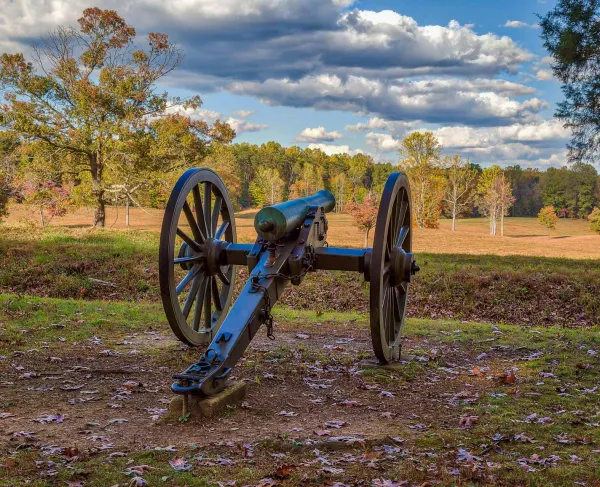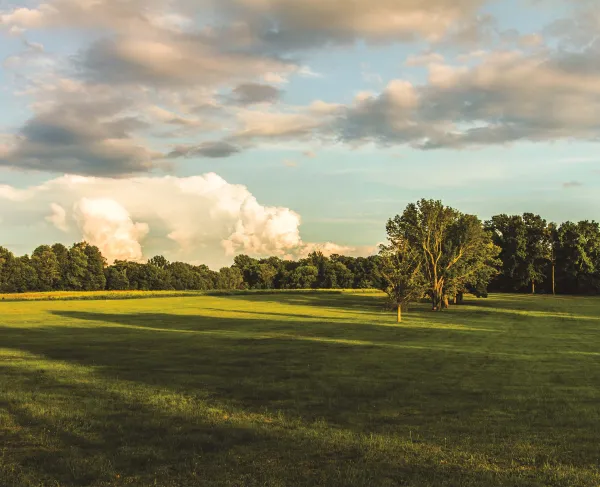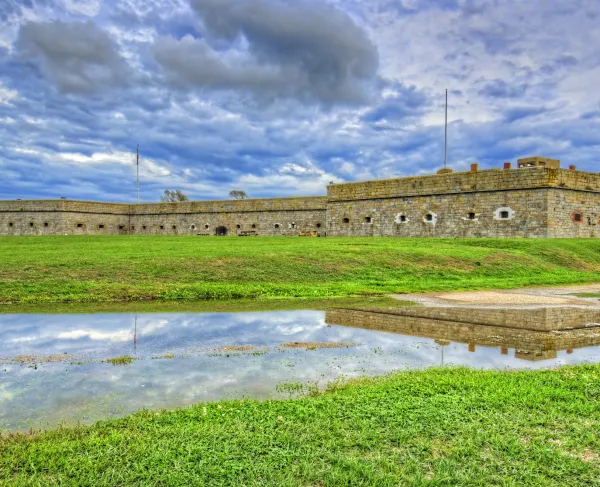Tour Revolutionary Philadelphia in Three Days

Founded in 1682 by William Penn as part of the Quaker colony of Pennsylvania, Philadelphia has long played a critical role in American life and culture. At the time of the American Revolution in the 1770s, the “City of Brotherly Love” was the largest in Colonial America, and was second only to London in the British Empire, with a population between 34,000 and 38,000 people. Located in eastern Pennsylvania, along the Delaware River, Philadelphia was a center of manufacturing in the colonies, helping to make it an economic center of the American colonies.
Philadelphia played a key role in the American War for Independence, providing the seat of the American revolutionary government. It was home to the First and Second Continental Congresses from 1774 to 1777, as well as the temporary capital following the formation of the new American government under the United States Constitution.
The city was also at the center of the Philadelphia Campaign, which played a crucial role in the course of the Revolutionary War. The British occupied the rebel headquarters in September 1777, under the leadership of General William Howe. The campaign included the battles of Brandywine, Germantown, and Paoli, which were tactical losses for Washington’s Army but resulted in French support for the Revolutionary Cause. The British evacuated the city in June 1778. As British forces began to make their retreat from Philadelphia to New York, Washington’s Army attacked in the Battle of Monmouth Courthouse.
Today, visitors to Philadelphia can still see many of the city’s most historic sites.
Before you go:
- Print or download the Tour Map.
- Watch the Revolutionary War Animated Map.
- Learn more about the Philadelphia Campaign.
Stop # 1: Independence National Historic Park
Time: 4-6 hours (or longer depending on how many sites you want to see!)
Details: https://www.nps.gov/inde/index.htm
Independence Park in Philadelphia is home to more than twenty of America’s most important historical sites. While visiting the Park, you can see Independence Hall, the Liberty Bell, and the house in which Thomas Jefferson wrote the Declaration of Independence, as well as numerous other historic buildings and landmarks that help tell the story of the American Revolution.
What to do:
Start at the Independence Visitor Center
- Learn more about Philadelphia’s critical role in the Revolution and American Independence by exploring the center’s exhibits.
- Check for any Park Ranger programs.
- Obtain tickets to tour Independence Hall. You must obtain your timed tickets to gain entry to Independence Hall, so try to get there early.
Don’t miss:
- Independence Hall – Originally intended to be the Pennsylvania State House, Independence Hall dates back to the 1730s. Most famously, Independence Hall was the site in which both the Declaration of Independence and the United States Constitution were signed. Independence Hall also provided the meeting place for the Second Continental Congress and was the site of the 1787 Constitutional Convention.
- The Liberty Bell Center – Located across from Independence Hall, the Liberty Bell Center is home to the famous Liberty Bell and accompanying exhibits.
- Declaration House – In 1776, Thomas Jefferson occupied two rooms on the second floor of Graff House, better known as Declaration House, in Philadelphia. That summer, Jefferson drafted the Declaration of Independence while serving as Virginia’s delegate to the Continental Congress.
- Washington Square – Only a few blocks from Independence Hall, Washington Square is home to the Tomb of the Unknown Revolutionary War Soldier, a statue of George Washington, and a variety of trees that landscape this city park.
- Benjamin Franklin Museum – This museum, which chronicles Franklin's life and contributions to the early Republic, stands near the site of one of the Founder's homes.
If you have time:
- Portrait Gallery in the Second Bank– Although the Second Bank was built in the 19th century, the structure now holds an impressive collection of famed 18th century artist, Charles Wilson Peale’s portraits of Revolutionary leaders.
- Old City Hall – Old City Hall provided the meeting place for the United States Supreme Court before the Capital city had moved to Washington, D.C.
- Congress Hall – Take a self-guided or ranger-led tour of Congress Hall, which provided the meeting place for the United States Congress from 1790-1800, when Philadelphia served as the temporary Capital. The House of Representatives met on the lower floors, while the Senate met upstairs. Congress Hall was also the site of two of America's first Presidential Inaugurations – George Washington was sworn in for his second term in 1793, and John Adams for his first in 1797.
Insider tip: Some of the buildings in Independence Park require obtaining tickets before entrance or passing through a security checkpoint. Additionally, some of the historic sites in the park are subject to seasonal closures or modified hours of operation. Spend a few minutes exploring the Independence National Historic Park website while planning your visit to help prepare for your trip!
Another Insider tip: Check out Reading Terminal Market for a variety of foods and a classic Philadelphia experience!
Stop # 2: National Constitution Center
Time: 2-4 hours
Details: https://constitutioncenter.org/visit
The National Constitution Center is one of America’s premiere museums for learning about the United States Constitution and celebrating the history and evolution of American liberty. Established by Congress and opened in 2000 to share information about the Constitution, the center features a variety of interactive exhibits, debates, and special programs that focus on civic education.
What to do:
Start inside the center.
- Attend the “Freedom Rising” multimedia theater performance as an orientation to the National Constitution Center.
- Check in with museum staff to see if there are any special programs, presentations, or Town Halls during your visit.
- Explore “The Story of We the People” exhibits.
Don’t Miss:
- Signers’ Hall – Learn about America’s Founding Fathers as you walk amongst their life-sized statues.
- Constituting Liberty: From the Declaration to the Bill of Rights – See some of the oldest surviving copies and earliest reproductions of America’s founding documents.
- Grand Hall Overlook: See flags that have flown over each of America’s state capitols.
Insider tip: If you have a limited amount of time, check the National Constitution Center Visitor Guide to see the exhibits you don’t want to miss!
Stop # 3: Old City Philadelphia
Time: 2-4 hours
Details:
This area of Philadelphia is known as "America's oldest square mile" for good reason. Step into Revolutionary America by taking a walking tour of the city's most historic Revolutionary-era houses, meeting halls, and landmarks.
What to do:
Start at the Independence Visitor Center and make your way around Philadelphia's historic neighborhoods.
- Check the schedules, opening hours, and admission fees for Philadelphia’s historic sites before you go to plan your visit.
Don’t Miss:
- Christ Church Burial Ground – See the burial places of Benjamin Franklin, and four signers of the Declaration of Independence: Benjamin Rush, Francis Hopkinson, Joseph Hewes, and George Ross. Visitors can enter the cemetery or go on a guided tour for a small fee.
- Betsy Ross’s House – See the house where seamstress and upholsterer Betsy Ross sewed the first American flag. Visitors can take a self-guided or an audio tour for a small entrance fee.
- Elfreth's Alley – Elfreth’s Alley is one of the oldest residential streets in America. Visit the Museum to learn more about this historic neighborhood and life in 18th century Philadelphia.
- First Bank of the United States – Although it is currently closed to the public, this neoclassical structure served as the First Bank of the United States. First Secretary of the Treasury, Alexander Hamilton, envisioned a national bank as a means of managing America’s post-Revolutionary War debt. Congress issued a 20-year charter for the Bank of the United States in 1791.
- Dolley Todd House – See the house where future First Lady Dolley Madison lived with her first husband, John Todd until his death in 1793. The Dolley Todd House is subject to seasonal closures and timed entry tickets, so make sure to check the website or talk to a Ranger at the Independence Visitor Center before you go!
- Powel House – This Georgian mansion was home to Samuel and Elizabeth Powel. The Powels hosted famous Revolutionary leaders like George and Martha Washington, John Adams, the Marquis de Lafayette, and Benjamin Franklin in their home in Society Hill. Elizabeth Willing Powel proved to be an important advisor and confidant to George Washington, in addition to hosting the Philadelphia elite.
- Thaddeus Kosciuszko National Memorial – Thaddeus Kosciuszko was a famous foreign fighter from Poland, who hosted notable Revolutionary figures – Like Thomas Jefferson – in this Philadelphia home. The Thaddeus Kosciuszho National Memorial is also the smallest National Park Site in America!
Insider tip: Visit the historic South 9th Street Italian Market and try a variety of cuisines from around the world in one of the oldest outdoor markets in the country!
Stop # 4: Museum of the American Revolution
Time: 2-4 hours
Details: https://www.amrevmuseum.org/visit
First opened to the public in 2017, the Museum of the American Revolution is one of the newest history centers in Philadelphia. The museum focuses on telling the story of America’s struggle for independence through a variety of artifacts and interactive exhibits relating to the American Revolution.
What to do:
Start inside the museum.
- Purchase tickets.
- Check for any daily events or special exhibits.
- Watch the orientation film, Revolution.
- Visit the main galleries.
Don’t Miss:
- Washington’s Headquarters Tent – See the carefully preserved tent in which Washington slept and held meetings while in the field during the Revolutionary War.
- March to Valley Forge – See William Trego’s famous depiction of the Continental Army’s “sad and dreary” march to Valley Forge in the winter of 1777.
- Boston Liberty Tree – See a life-sized reproduction of the famous elm tree under which America’s earliest Patriots debated their ideas about the meaning of liberty.
- Replica Privateer Ship – Get a feel for a Revolutionary sailor’s experience by climbing aboard this replica privateer ship.
- The Revolution’s Veterans – See 19th century photographs of Revolutionary War veterans.
Stop # 5: Carpenters’ Hall and the New Hall Military Museum
Time: 30 minutes - 1 hour each
Details: www.carpentershall.org
https://www.nps.gov/inde/planyourvisit/newhall.htm
Built in 1770 to house the Carpenters’ Company in Philadelphia, Carpenters’ Hall has a long history as a historic meeting place. Carpenters’ Hall played a critical role in the American Revolution as the meeting place for the First Continental Congress in 1774. During the Philadelphia Campaign, the hall was occupied by British troops, and later by the American Barracks Master and Commissary General. Carpenters’ Hall has also housed a library, an infirmary, an auction house, the American Philosophical Society, the Franklin Institute, and the First and Second Banks of the United States. To this day, Carpenters’ Hall is still home to one of the oldest craft guilds in America.
What to do:
Tour the hall, and explore one of America’s most historic meeting places through a variety of exhibits, architectural features, and replicas that celebrate America’s revolutionary history and the history of Philadelphia’s Carpenters’ Company. After you're finished, cross the courtyard to the New Hall Military Museum to learn more about the means of waging the Revolutionary War.
Don’t Miss:
- The First Continental Congress Chairs – Carpenters’ Hall is home to both the original Continental Congress chairs and replicas in which visitors can sit to get a feel for a Congressional Delegate’s experience.
- Painting of George Washington – Painted by Jane Stuart, this portrait of Washington is a copy of the portrait painted by the artist’s father, Gilbert Stuart, which hangs in the Library of Congress.
- The Model of Carpenters’ Hall – This model provides a 3D illustration of the construction techniques used to build Carpenters’ Hall and other 18th century structures.
- New Hall Military Museum – The New Hall Military Museum is located just a few feet from Carpenter’s Hall in old Philadelphia, in a reconstruction of the building which originally housed the first Secretary of War, Henry Knox’s office. The museum currently displays artifacts relating to the founding and early history of the United States Marine Corps, Army, and Navy.
Stop # 6: Fort Mifflin
Time: 3 hours
Details: http://www.fortmifflin.us/plan-your-visit/
Originally called Fort Island Battery and also known as Mud Island Fort, Fort Mifflin was built between 1771 and 1776 and is located on Mud Island in the Delaware River near Philadelphia, Pennsylvania. During the Revolutionary War, Fort Mifflin was the site of a siege, which ended with the British controlling the fortifications. The fort was rebuilt in 1794, housed prisoners during the Civil War, and remained an active military base until 1962. Today, the site is a National Historic Landmark and offers tours of the grounds.
What to do:
Start by visiting Fort Mifflin's website to see if there are any programs in which you want to participate.
- Check to make sure the fort is open on the day you hope to visit; the park is open Wednesdays through Sundays, March 31st through December 15th and on Mondays and Tuesdays from December 15th through March 1st, but by appointment only.
- Check to see if there are any special programs or events scheduled for the day you are visiting. Be sure to check online before you go in case tickets to events need to be reserved in advance!
If you're interested...
- Fort Mifflin has a reputation for paranormal activity, and the site offers several programs that give visitors the opportunity to find out if the fort is indeed haunted. You can find out more about the Paranormal Programs and Events on the fort’s website.
- Fort Mifflin is also located near the Philadelphia International Airport, so look out for planes flying over the fort as they are about to land!
Insider Tip: Be sure to check out the programs and events schedules before you go… events often require booking in advance and usually sell out fast!
Another Insider Tip: Fort Mifflin can make a great picnic place, so pack some snacks to make a day out of your excursion to this historic fort!





